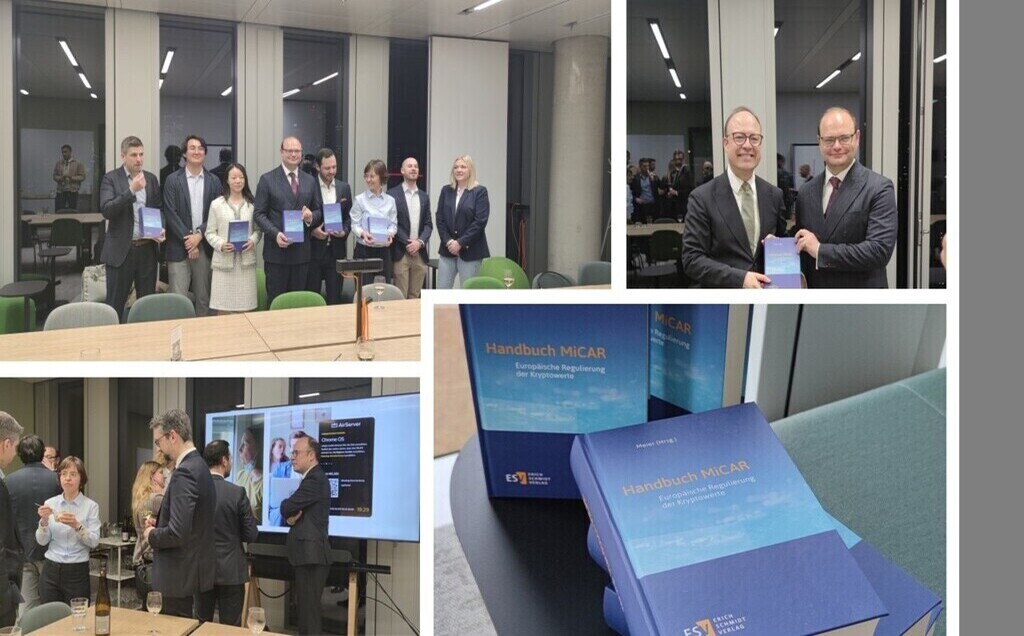Under the Markets in Crypto Assets Regulation (MiCAR), which will gradually take legal effect in the European Union from June 30, 2024, a crypto whitepaper must be prepared in the event of a public offering of crypto assets as well as when applying for their admission to trading on a trading platform. The first three parts of this series dealt with the content requirements for a whitepaper in the case of an offering or admission in general of crypto assets as defined by MiCAR, as well as of asset-referenced tokens and e-money tokens. The fourth part dealt with marketing communications in the event of the sale of tokens and their consistency in content with the MiCAR whitepaper to be published. This fifth part analyzes how and where to publish a MiCAR whitepaper after it has been created and how to deal with important information that occurs after the whitepaper has been published. All crypto assets relevant under MiCAR for which a whitepaper is to be prepared are addressed.
MiCAR Whitepaper is to be Published on the Provider’s Website
Providers of crypto assets other than asset-referenced tokens or e-money tokens and persons applying for admission of such crypto assets to trading must publish the MiCAR whitepaper on their publicly accessible website. In terms of timing, this must in any case be done prior to the start date of the public offering of the relevant crypto assets or on the start date of the admission. The MiCAR whitepaper must remain available on the website of the providers or persons seeking admission to trading for as long as the crypto assets are held by the public. The published whitepaper for crypto assets other than asset-referenced tokens or e-money tokens must be consistent with the version submitted to the competent authority and any amended version. An issuer of an asset-referenced token must also publish on its website the MiCAR whitepaper and any amended version. The whitepaper must be made publicly available by the start date of the public offering of the asset-referenced token or the start date of the admission of these tokens to trading. This whitepaper must remain published as long as the asset-referenced tokens are held by the public. Prior to the public offering of an e-money token in the European Union or the application for admission of the e-money token to trading, the issuer of the e-money token must also publish the whitepaper on its website.
Supplementary Obligation and Other Publication Obligations in Addition to the MiCAR Whitepaper
Also to be published on the provider’s website is the result of the public offering in the case of an offering of crypto assets other than asset-referenced tokens or e-money tokens. If there is a subscription period, the result must be published within 20 working days after the end of the subscription period. In the case that the offer is open-ended, the number of crypto asset units in circulation must be published on the website on an ongoing basis, at least monthly. Issuers of asset-referenced tokens must publish on their website, in addition to the relevant MiCAR whitepaper, in a publicly and easily accessible place, as soon as possible, a brief, clear, precise and transparent summary of the audit report and the complete and unedited audit report relating to the asset reserve. For the duration of the public offering or for the duration of the admission of the crypto asset to trading, providers of crypto assets other than asset-referenced tokens or e-money tokens, persons applying for admission of such crypto assets to trading, or operators of a trading platform for crypto assets must keep the MiCAR whitepaper up to date. This means that the whitepaper must be amended whenever a new material factor, material error, or material inaccuracy has occurred that may affect the valuation of the crypto assets. The same applies to an e-money token whitepaper. Exactly what constitutes a circumstance that affects the value of the token is not specified in MiCAR and is therefore likely to be a matter of case-by-case determination. Issuers of asset-referenced tokens must notify the competent authority of any intended change to their business model that occurs after the granting of approval or after the approval of the MiCAR whitepaper and is likely to significantly influence the purchase decision of a holder or a potential holder of asset-referenced tokens. In this case, the whitepaper must be updated accordingly.
Attorney Dr. Konrad Uhink
The lawyer responsible for providing advice on MiCAR whitepaper creation in our law firm is Attorney Dr. Konrad Uhink.
subscribe to Newsletter






